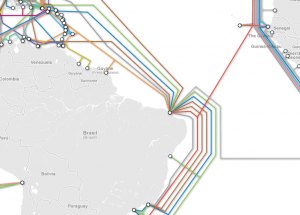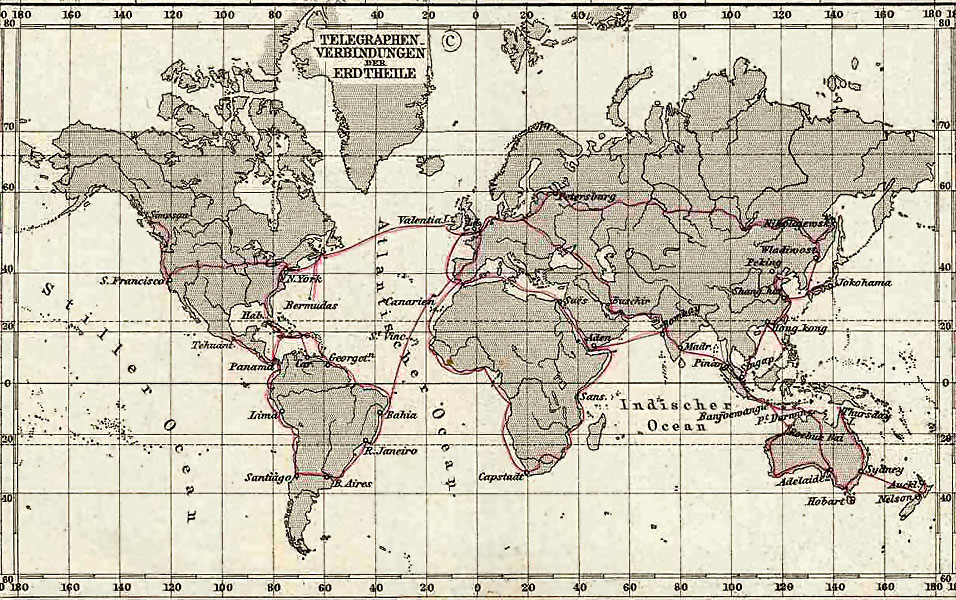 This link will take you to an impressive interactive map of the worlds connections between islands and continents. It comes from a Gizmodo article by Andrew Blum titled, This is the Internet. It’s a graphic representation that the Internet is largely underwater, where long bundles of fiber-optic cables stretch across ocean floors. If nothing else, it will indicate the amazing importance of Fortaleza, Brazil.
This link will take you to an impressive interactive map of the worlds connections between islands and continents. It comes from a Gizmodo article by Andrew Blum titled, This is the Internet. It’s a graphic representation that the Internet is largely underwater, where long bundles of fiber-optic cables stretch across ocean floors. If nothing else, it will indicate the amazing importance of Fortaleza, Brazil.
For obvious reasons the extra expense of dropping cable to the ocean floor is well worth it. There are no tunnels or blasting needed, few property boundary issues, and fiber optic cable is less expensive than leasing land or satellite access. Africa was wired from the sea. A submarine communication cable is laid on the sea bed between land-based stations to carry telecommunication across stretches of ocean.

(Telegraphen Verbindungen), 1891 Stielers Hand-Atlas, Plate No. 5
The first submarine communications cables carried telegraph traffic. Early attempts, with different cable technologies, were unsuccessful. Cables would leak water into the wire, or separate, or fail for unknown reasons. The first successful trans-Atlantic telegraph cable was completed in 1866 after several attempts. More cable was installed across the Mediterranean, Caribbean, and between Asia, Japan, and Australia. In 1902 a telegraph cable was connected across the Pacific. Later, larger cables carried telephone traffic. Modern cables, typically 69 millimetres (2.7 in) in diameter, use fiber technology to carry digital traffic.
For more information try: Communications Under the Seas: The Evolving Cable Network and Its Implications

You must log in to post a comment.